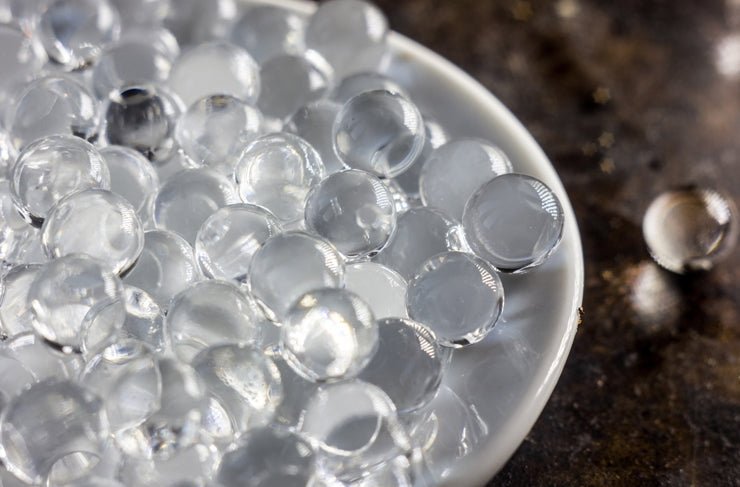
What Are Superabsorbent Polymers and Why Do They Matter?
|
|
Time to read 3 min
|
|
Time to read 3 min
Superabsorbent polymers (SAPs) might not be something you think about daily, but their impact on modern life cannot be overstated. These extraordinary materials have revolutionised industries, from personal hygiene products to agriculture. With their unique ability to soak up and retain vast amounts of liquid, SAPs are indispensable in countless applications. Let’s look closer at the science, uses, and innovations surrounding these polymers and why they’re so important.
At their core, superabsorbent polymers are materials designed to absorb and retain water far beyond their weight – sometimes up to 300 times their own mass. How is this possible? The answer lies in their hydrophilic properties and clever chemistry.
SAPs are made up of chains of monomers, often derived from acrylic acid. Through a process known as cross-linking, these chains form a three-dimensional network that expands when exposed to water. Think of it like a sponge on steroids – but instead of simply holding water, SAPs chemically bind it, making it hard to squeeze out. This is why they’re so useful in applications ranging from nappies to agriculture. For a deeper understanding of the chemistry behind SAPs, you can explore resources like Super Absorbent Polymer Characteristics.
Where do superabsorbent polymers find their purpose? You’ve likely already encountered them in products you use every day.
Perhaps the most common use of SAPs is in personal hygiene items like disposable nappies, sanitary pads, and incontinence products. SAPs’ ability to rapidly absorb and lock away moisture ensures users stay dry and comfortable, even during prolonged wear. This has made them indispensable for parents of babies and those managing sensitive personal care needs. Research shows that SAPs are safe for these products and play a crucial role in their efficacy (safety of superabsorbent baby diapers).
In agriculture, the benefits of SAPs are transformative. Farmers use these polymers to retain soil moisture, reducing irrigation needs and conserving resources. By holding water close to plant roots, they can help crops thrive even during droughts, making them a critical tool in sustainable farming practices. For more insights, check out an article on how SAPs are aiding in soil water management (read more here).
SAPs’ versatility extends into construction and industrial fields too. They’re used in spill control products, where they absorb hazardous liquids, and even in self-healing concrete, improving its durability and lifespan. A niche but fascinating use of SAPs is in creating artificial snow, catering to entertainment and landscaping needs. This adaptability underscores their unique contributions across industries.
How do manufacturers create these remarkable polymers? The production of SAPs involves several methods, each tailored to specific performance needs.
Each method has its advantages depending on the intended application. Curious about the fine details? You can learn more from resources like The Manufacturing Process of Super Absorbent Polymers.
One common question surrounding superabsorbent polymers is, “Are they safe?” When it comes to nappies, the answer is reassuring. Extensive research confirms that SAPs are non-toxic and safe for use in contact with skin. Manufacturers conduct rigorous safety assessments to ensure their products meet health standards (learn more about diaper safety here).
For parents, knowing that SAPs undergo strict testing provides peace of mind. They are designed to trap liquid without breaking down, ensuring your little one stays comfortable and dry.
The world of SAPs is evolving in exciting ways. One major trend is the development of biodegradable superabsorbent polymers, designed to reduce the environmental footprint of disposable products. Innovators are also exploring sustainable manufacturing methods that minimise waste and energy consumption while maintaining product performance.
At the same time, advancements in chemical engineering aim to expand SAPs’ capabilities, enabling them to handle extreme conditions or absorb a wider range of substances. The challenge lies in balancing innovation with environmental considerations, but the future looks promising for these incredible materials.
From keeping babies dry to supporting sustainable farming, superabsorbent polymers are truly unsung heroes of the modern world. Their remarkable properties and versatility make them indispensable in various industries. As technology advances and sustainability becomes a priority, SAPs are sure to play an even bigger role in addressing global challenges.
Next time you use a disposable nappy or hear about drought-resistant farming, take a moment to appreciate the science behind this tiny, yet powerful material. Its impact touches us all, shaping how we live and solve problems in increasingly innovative ways.